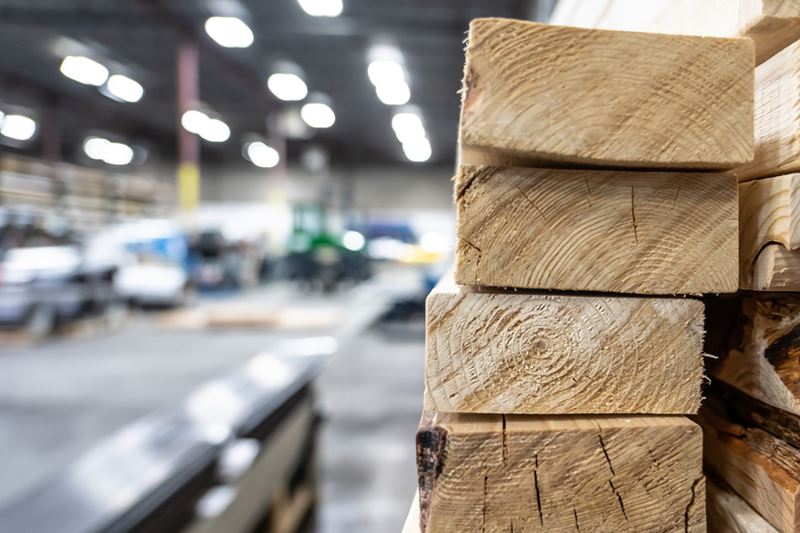The importance of geotechnical reports before breaking ground
The importance of geotechnical reports before breaking ground
Safety is always job number one when there’s work in progress on construction sites and infrastructure projects. However, protecting people, the surrounding environment, and the project itself starts long before you break ground. Prior to starting construction, it’s essential to conduct a geotechnical survey.
Sovereign’s Cheryl Kindopp, Senior Underwriting Specialist, and Joseph Alcaraz, Associate Vice President, Risk Engineering at Sovereign Insurance discuss the basics of geotechnical reports that are musts to know for property owners and developers. They also examine the importance of geotechnical reports, why following through on recommendations is vital, and what insurance providers are on the lookout for.
What is a geotechnical report?
When proposing a plan for building a new structure or rebuilding an existing structure, a geotechnical investigation will need to be conducted. The investigation allows property owners and developers to determine if the geological elements of the site are suitable for the plans and ensure the project can be safely and successfully constructed.
A geotechnical report documents the data and findings from the research and tests conducted by geotechnical engineers during the investigation, including general site conditions, geology, drainage, and ground cover. The report also provides an assessment of subsurface conditions, including soil, rock and water, as well as recommendations for the proposed design and construction.
Why is it needed?
A geotechnical report is typically needed to obtain a building permit for a construction project, as well as to obtain appropriate insurance coverage. The report is vital to identify potential risks and hazards that can result in structural failures, building degradation, environmental damage, and more.
For example, usually every attempt is made to construct shallow foundations—the cheapest and fastest foundation type. However, if the soil immediately below the footing is weak or compressible, other foundation types need to be considered.
“Engineers and developers are looking for the fastest, most cost-effective way of building any type of structure,” said Joseph. “That can cause potential issues because the foundation is obviously what is so important when it comes to construction.”
If the geotechnical engineer finds that the soil conditions don’t meet the structural support requirements, they’ll make recommendations on how to remedy the problem.
What are insurance providers looking for?
Cheryl noted that when she and her team receive an insurance submission, one key question is: Is the geotech report done? Importantly, if it has been done, she’ll look to see when it was conducted.
“A report could be 25 years old, so the question is: Has there been a building on that site since they’ve done the report? What is around the site now that wasn’t there back then?” said Cheryl. “So, that is where I start.”
Even in the case of a rebuild, a geotechnical report conducted 10 years before is likely too old. “Chances are, [the new building] is going to be bigger and taller and have other elements covered in the old report that aren’t relevant today,” said Cheryl.
It’s advisable to conduct a geotechnical survey shortly before obtaining permits. Cheryl says if a report is more than three to five years old, there would be a need to look into the specifics of the situation to determine if the report is still valid based on the project and site conditions.
After understanding the report’s timelines, Cheryl would look at the recommendations and how the applicant is going to comply with them. “It’s not our place to tell them what they have to do, but it is within our right to [determine the risk] based on how they’re going to move forward,” she said.
Both Cheryl and Joseph shared examples of red flags and failures related to geotechnical issues. Cheryl noted that, during construction of the LRT tunnel in Ottawa (not a project she was involved with), a massive sinkhole opened up on Rideau Street, likely from the instability of wet, sandy soil in the area. 1
Joseph noted an example of a multi-storey condo building that used a foundation technique called a slurry wall that hadn’t been done before in the area. “They were unable to control the groundwater and it started seeping into the foundation walls during the course of construction,” said Joseph. He added that, when builders and developers plan to use an unusual or uncommon construction method, this could be a red flag on a geotechnical report.
With any geotechnical report, Joseph stressed: “It’s very important for developers and contractors to revisit and comply with the recommendations.”
Loss control specialists are valuable partners who can help developers understand the importance of a geotechnical report and take steps to complete them. Before breaking ground on any new development or construction project, it’s imperative that a geotechnical report is completed.
Sources
1 Tunnel work likely loosened sandy soil, causing sinkhole: Report, CBC News, April 5 2017


